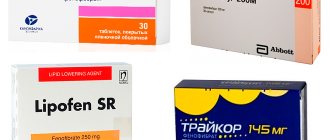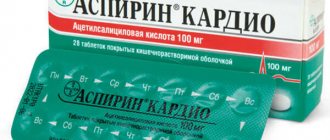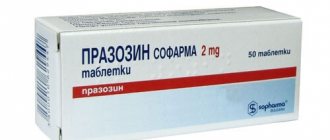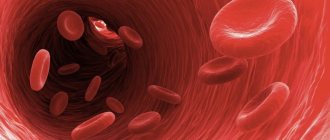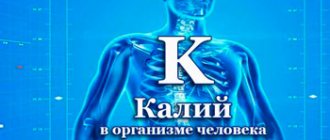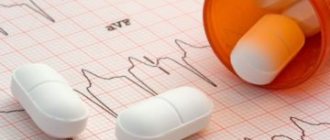Types of calcium blockers
Antagonists can be considered in several classifications. From the point of view of chemical structure, drugs are:
- benzodiazepine derivatives (Cardil, Dilzem);
- derivatives of phenylalkylamine (Falipamil, Verapamil);
- dihydropyridine structure (Felodipine, Normodipine).
From another, more general point of view, we can consider antagonists that fight excess calcium ions by nature of origin:
- Dihydpropyridine (Amlodipine, Nimodipine);
- non-dihydropyridine.
In a more modern interpretation, it is legitimate to consider blockers in accordance with generations of drugs. There are only three of them:
- 1st generation drugs are less common, as they often have limited bioavailability, many contraindications and relatively little effectiveness. The effect of taking it is short-term. The following drugs in this group are popular: Nifedipine and Diltiazem.
- Second generation drugs are used more often due to their greater effectiveness. A negative feature may be that some of the products in this segment have a short-term effect comparable to that of the first generation products. It is difficult to say exactly in advance what the result of treatment will be. Among the drugs of this type are Manidipine and Falipamil.
- The most pronounced effect of taking it is the third generation calcium ion antagonists - the newest means to combat hypertension. These drugs have high bioavailability and are selective. Such drugs work for a long time due to the fact that the half-life is quite long. Currently, the drugs of this group are most often used, for example, Lacidipine and Amlodipine.
Phenylalkylamines
Drugs of this type selectively affect the functioning of the heart, therefore they are often used to treat arrhythmia, tachycardia, angina pectoris, and stenosis. Medicines of this type are also effective for treating high blood pressure.
Side effects include:
- low heart rate in a sitting position;
- weakness of the sinus node;
- carotid sinus disease;
- atrioventricular block (no more than 2 degrees).
When used, the pulse may increase, headache, cardiac failure, nausea, and urinary retention may occur. The most commonly used drugs among these drugs are Verapamil, Isoptin SR and Verogalid EP (the last two are long-acting). 2nd generation medications are rarely used.
Dihydropyridines
Antagonists of this type are represented by a wide range of drugs. Basically, they eliminate calcium deposits in blood vessels, which helps lower blood pressure. In addition to hypertension, dihydropyridines can be used for Prinzmetal and stable angina. Certain medications are effective for Raynaud's disease.
Such drugs should not be used for decompensation of heart failure, relapse of supraventricular tachycardia and coronary syndromes in the acute stage. When taken, headaches, redness of the facial skin, swelling of the legs, rapid heartbeat and gum hyperplasia may occur. Known medicines:
- Amlodipine,
- Nifedipine,
- Isradipin,
- Nimodipine,
- Lacidipine,
- Nicardipine.
Each of them has several analogues. The dosage and frequency of taking medications is determined by the doctor.
Benzodiazepines
Non-dihydropyridine calcium antagonists affect the heart and blood vessels equally. Used for:
- hypertension (even after heart attacks);
- hypertension in diabetics (when ACE inhibitors are contraindicated);
- hypertension complicated by angina pectoris (when beta-blockers are undesirable);
- tachycardia of supraventricular paroxysmal type;
- prevention of coronary artery spasms;
- Princemetal.
It is undesirable to take benzodiazepines if there are abnormalities in the sinus node, low heart rate, severe atrioventricular block, or heart failure. Side effects include nausea, urinary retention, constipation, headaches, and bradycardia. The most famous drug is Diltiazem.
It has many analogues (for example, Blockalcin, Cortiazem, Tiakem and Zilden).
Contraindications
Due to the difference in the pharmacological effects of the drugs, contraindications for different groups differ.
Verapamil and diltiazem derivatives should not be prescribed for sick sinus syndrome, atrioventricular block, left ventricular systolic dysfunction, and cardiogenic shock. They are contraindicated if systolic blood pressure is below 90 mm Hg. Art., as well as Wolff-Parkinson-White syndrome with anterograde conduction along an additional pathway.
Drugs from the verapamil and diltiazem groups are relatively contraindicated in cases of digitalis intoxication, severe sinus bradycardia (less than 50 beats per minute), and a tendency to severe constipation. They should not be combined with beta-blockers, nitrates, prazosin, quinidine and disopyramide, because in this case there is a danger of a sharp decrease in blood pressure.
Classification of calcium channel blockers
Based on the chemical structure and the time when BCCs were discovered, they are classified into the following groups:
- Dihydropyridine - act on blood vessels and are used to treat arterial hypertension. This is the main group of AKs, it is in constant development and consists of many types of medications.
- Phenylalkylamine - act on the myocardium and the conduction system of the heart muscle, prescribed for the treatment of various types of arrhythmia and angina pectoris.
- Benzodiazepines are a transition group of BMCAs, medications that have the properties of both dihydropyridine BMCAs and phenylalkylamine BCAs.
There are four generations of calcium antagonists:
| Generation | Name |
| I generation | Nifedipine, Verapamil, Diltiazem |
| II generation | Felodipine, Isradipine, Nimodipine |
| III generation | Amplodipine, Lercanidipine |
| IV generation | Cilnidipine |
The scope of use of calcium channel blockers is quite extensive, discussed in more detail below:
- Arterial hypertension. CCBs provoke an increase in the lumen of blood vessels, reduce the resistance of the walls of blood vessels, thereby lowering blood pressure. The peculiarity of these drugs is that they have a predominant effect on the arteries rather than the veins. Calcium antagonists are drugs included in 5 groups of preferred medications for drug therapy for hypertension.
- Angina (sudden chest pain and shortness of breath). CCBs increase the lumen of vessel walls and reduce cardiac contractility. Systemic relaxation of smooth muscles in the walls of blood vessels, which is caused by the use of drugs of the dihydropyridine group, lowers blood pressure. As a result, the load on the heart muscle is reduced and its need for oxygen is reduced.
Medications such as Verapamil and Diltiazem act primarily on the heart muscle, lowering the heart rate (HR), due to this effect the heart’s need for oxygen becomes less, which shows the effectiveness of these drugs.
Another advantage of calcium antagonists for angina pectoris is that the blood supply to the myocardium improves, because they dilate the coronary arteries and prevent the appearance of spasms. Complex treatment with CCBs and β-blockers is the basis for the treatment of angina pectoris.
- Heart rhythm disturbance (arrhythmia). Some CCB drugs affect the sinus and atrioventricular nodes, which has a positive effect on the heart rhythm of patients with atrial fibrillation.
- Raynaud's disease (angiotrophoneurosis with predominant damage to small terminal arteries and arterioles). The use of Nifedipine helps eliminate arterial spasms, as a result of which various manifestations of this disease are reduced. Medications such as Amplodipine and Diltiazem can also be used for this purpose.
- Cluster headaches (acute, recurring attacks of pain concentrated in the eye area). The drug Verapamil helps reduce the severity of pain attacks.
- Hypertrophic Cardiomyopathy (HCM - thickening of the wall of the left and, in rare cases, right ventricles of the heart muscle). A CCB, namely Verapamil, is used to reduce cardiac contractility. If the patient has contraindications to the use of β-blockers, then calcium channel blockers are prescribed to treat this disease.
- Huntington's syndrome.
- Alcohol addiction.
- Encephalopathy.
Mechanism of action
So what are calcium antagonists?
These are medications that are distinguished by their ability to effectively reduce blood pressure levels, both upper and lower. Their active effect is mainly observed in elderly people.
Calcium channel inhibitors are considered selective blockers that are located in the sinoatrial and atrioventricular tracts, Purkinje fibers, myocardial myofibrils, smooth muscle cells of arteries, veins, capillaries, and skeletal muscles.
Calcium blockers can improve the patency of arteries, veins and small capillaries, and also have the following effects:
- antianginal;
- anti-ischemic;
- lowering high blood pressure;
- organoprotective (cardioprotective, nephroprotective);
- antiatherogenic;
- normalization of heart rate;
- decreased pressure in the pulmonary artery and dilatation of the bronchi;
- decreased platelet aggregation.
Dihydropyridine group antagonists
Dihydropyridine drug is the best and most often prescribed drug from the pharmacological group of calcium antagonists.
Characteristics of the most used drugs:
| a drug | characteristic |
| blocker Nifedipine | This drug acts on the vascular wall. Used to treat: |
| · hypertension; | |
| · effective in treating hypertensive crisis; | |
| · with angina pectoris of the vasospastic type; | |
| · for therapy for Raynaud's disease; | |
| · tachycardia. | |
| Nifedipine does not aggravate the pathology of cardiac organ failure, because by reducing the heartbeat, the load on the organ becomes less. Belongs to the group of long-acting agents. | |
| drug Nicardipine | the drug has a positive effect on the entire vascular system. It is applied for: |
| · treatment of angina pectoris; | |
| · to reduce high blood pressure index in hypertension; | |
| · to improve blood supply to the periphery. | |
| the drug Amlodipine, as well as the drug Felodipine | properties of drugs to act directly on the vascular membranes. Long-term use drugs, and they are prescribed for angina pectoris, as well as for advanced forms of hypertension, when blood pressure indices are quite high. Side effects in the form of headaches and hot flashes appear only at the initial stage of administration and disappear within a few calendar days. |
| medications Lercanidipine and Isradipine | These drugs are used for all stages of hypertension, as well as for hypertensive crisis. |
| medicinal drug - antagonist Nimodipine | the drug has selective properties and affects the microcirculation of cerebral vessels. Having these properties, the drug is used for: |
| · relieving antispasmodic attacks of cerebral vessels; | |
| · to prevent a recurrent attack of subarachnoid stroke; | |
| · for other cerebrovascular pathologies, this drug is not used, and there are no results from its use. |
Mechanism of action and capabilities of AK 1-2 generations
Angina pectoris
Angina pectoris is a disease in which a lack of oxygen develops in the heart, resulting in myocardial dystrophy. The pathology is accompanied by sharp attacks of pain in the chest, neck, and axillary region. This process is controlled by excess calcium, which leads to vasospasm. It can be triggered by both emotions and physical fatigue.
All calcium antagonists increase cardiovascular circulation, which helps prevent another attack. Calcium antagonists help the patient withstand emotional and physical stress.
With systemic therapy, the patient must be prescribed Diltiazem in an individually selected dosage and regimen.
For angina pectoris, combined with cardiac arrhythmias and hypertension, it is necessary to prescribe dihydropyridines (Corinfar, nifedipine). In many cases, Nifedipine is the primary drug in the treatment of pathology.
Diseases for which antiarrhythmics are prescribed
Arrhythmia drugs stop the circulation of the pathological impulse through the myocardial channels, restoring sinus rhythm. Therefore, such medications are prescribed for diseases in which one of the main symptoms is disruption of the normal rhythm of the heart:
- any forms of cardiac ischemia: from angina to pre-infarction;
- pathological disorders of the central nervous system: trauma, inflammation, intoxication;
- stressful situations;
- hormonal changes in the body: puberty, pathological periods, pregnancy, lactation, menopause, incorrect dose of hormone replacement therapy, contraceptives;
- inflammation of the cardiac membranes of any origin: endocarditis, myocarditis, pericarditis, pancarditis;
- hypercalcemia or hypokalemia;
- endocrine pathologies: thyroid diseases, diabetes of any type;
- VSD.
Classification of drugs
There are a large number of classifications according to which blockers are divided into several types in accordance with tissue specificity, chemical structure, duration of exposure, etc. The most common use of classification is to reflect the chemical heterogeneity of medications. In accordance with the chemical structure, the following is distinguished:
- Phenylalkylamines (Gallopamil, Verapamil, etc.)
- Diphenylpiperazines (Flunarizine, Cinnarizine)
- 1,4-dihydropyridines (Lercanidipine, Nifedipine, Isradipine, Nitrendipine, Nicardipine, Amlodipine, Felodipine, etc.)
- Benzodiazepines (Clentiazem, Diltiazem)
- Diarylaminoprilamines (Bepridil)
In accordance with the effect on the nervous system, drugs are divided into two groups. They can be increasing or decreasing.
Learn more about calcium antagonists in the video.
Pharmacokinetics
Calcium antagonists are used orally (by mouth). In emergency cases, some drugs are given parenterally (intravenously), such as verapamil, nifedipine or diltiazem. Nifedipine can also be used sublingually, for example, to relieve a hypertensive crisis. In this case, the tablet should be chewed.
After oral administration, almost all calcium antagonists, except felodipine, isradipine and amlodipine, are rapidly absorbed. The binding to plasma proteins is very high and ranges from 70 to 98%. Medicines in this group penetrate well into tissues and undergo biotransformation in the liver. They are excreted mainly by the kidneys (80–90%), partially through the intestines. Elimination is slower in older people. Bioavailability may vary depending on concomitant diseases.
Features of 1st generation drugs:
- the maximum concentration is reached 1–2 hours after oral administration;
- the half-life is from 3 to 7 hours;
- act within 4–6 hours.
Differences of the 2nd generation:
- the maximum concentration in the blood is observed after 3–12 hours;
- the half-life can range from 5 to 11 hours;
- The average duration of action is 12 hours.
Magnesium
http-equiv=”Content-Type” content=”text/html;″>href=”https://gipertonija.ru/wp-content/uploads/2016/11/1-52.jpg” data-slb-active =»1″ data-slb-asset=»487065431″ data-slb-internal=»0″ data-slb-group=»14168″>
An imbalance of calcium and magnesium in the body can lead to many different diseases. The mechanism of action of magnesium on the human body is multiple and extremely complex. Without magnesium, the full functioning of the human body is impossible.
A lack of this element can provoke an increase in blood pressure parameters. Some doctors recommend this element to every patient who is faced with arterial hypertension. It is believed that with high blood pressure, the likelihood that there is little magnesium in the body is about 90%.
If there is not enough magnesium in the body, the following symptoms from the cardiovascular system may occur:
- Headache.
- Angina pectoris, tachycardia.
- Arrhythmia, blood circulation disorder.
- Increased blood pressure.
- Predisposition to the formation of blood clots.
The list of symptoms can be supplemented with more specific signs of magnesium deficiency - cramping of the legs, muscles, back and other parts of the body.
The actions of magnesium are due to the relaxation of the central nervous system, reducing vasospasm. Doctors achieve this effect when they administer magnesium during a hypertensive crisis.
It is worth saying that magnesium is a calcium channel blocker of natural origin. It is the interaction of magnesium with certain medications that makes it possible to achieve a more pronounced effect in hypertension.
Description of calcium antagonists, dosage
Let's take a closer look at the effects of medications from different groups. Let's start with phenylalkylamines.
Phenylalkylamines. The drugs in this group exhibit a selective effect on the heart and blood vessels. They are prescribed for:
- heart rhythm disturbances;
- hypertension;
- pathologies of the heart muscle;
- angina pectoris of all types.
Side effects include:
- urine retention;
- headaches;
- nausea;
- bradycardia;
- heart failure.
In practice, verapamil is often prescribed, which is present in the following medications: Isoptin, Finoptin. Tablets are produced in dosages of 40 and 80 grams. It is worth taking these medications 2 – 3 times a day.
They also produce extended-release tablets “Verogalid ER” and “Isoptin SR”. These medications include 240 mg. active remedy. They are prescribed for admission once a day.
The medicine is also produced for injection. The drug is represented by a 0.25% solution of verapamil hydrochloride. The 2 ml of solution contained inside the ampoule contains 5 mg. active remedy. This type of medication is used in emergency situations. It is administered intravenously.
2nd generation medications are rarely used in practice.
Dihydropyridines. This subgroup of blockers is considered the most numerous. The main action is aimed at blood vessels. A lesser effect is observed on the heart and conduction system. Prescribed for:
- stable form of angina;
- arterial hypertension;
- vasospastic angina.
Specific medications are prescribed to improve the well-being of patients with Raynaud's syndrome. Among the contraindications we indicate:
- decompensation of heart failure;
- supraventricular tachycardia;
- coronary syndrome.
Taking medications in this group often causes:
- redness of the epidermis on the face;
- headaches;
- swelling of the legs;
- tachycardia;
- gum hyperplasia.
The list of calcium antagonists in the series under consideration is very long. We indicate them with the dosage prescribed by the doctor:
- Nifedipine short-acting. Often prescribed are “Cordipin”, “Cordaflex”, “Corinfar”, “Adalat”, “Phenigidine” (10 mg).
- Lacidipine. Present in “Sakur” (2.4 mg).
- Lercanidipine. Present in Zanidip-Recordati, Lernikor, Lercanidipine hydrochloride, Lerkamen (10.20 mg).
- Nifedipine extended exposure. Medicines are represented by “Corinfar retard”, “Calcigard retard”, “Cordipin retard” (20 mg).
- Nitrendipine. Present in Nitremed, Octidipine (20 mg).
- Nifedipine in the form of modified-release tablets. These are “Nifecard HL”, “Cordipin HL”, “Osmo-Adalat”, “Cordaflex RD” (30, 40, 60 mg).
- Felodipine. Present in Felodipe, Filotense retard, Plendil (2.5, 5, 10 mg).
- Isradipin. Present in Lomira (2.5, 5 mg).
- Amlodipine. The active ingredient is present in Tenox, Stamlo, Amlovas, Norvaska, Normodipine (2.5, 5, 10 mg) and in Kalchek, Acridipine, Cardilopine, EsCordi Core ", "Amlotope" (2.5, 5 mg).
- Nicardipine. Present in “Perdipin”, “Barizin”. (20, 40 mg).
- Riodipine. Present in Foridon (10 mg).
- Nimodipine. Present in Brainal, Nimopin, Nimotop, Dilceren (30 mg).
Benzodiazepines . Substances of this series affect the heart and blood vessels. Medications are prescribed for:
- hypertension;
- carrying out the prevention of spasms of the coronary arteries;
- tense angina;
- hypertension in patients with diabetes;
- Prinzmetal's angina;
- paroxysmal supraventricular tachycardia.
Diltiazem is of particular clinical importance. Its analogues are:
- "Dilcem" (60, 90 mg).
- "Silden" (60 mg).
- "Altiazem RR" (120 mg).
- "Blocalcin" (60 mg).
- "Diltiazem SR" (90 mg).
- Cortiazem (90 mg).
- "Tiachem" (60, 200, 300 mg).
- "Dilren" (300 mg).
Other calcium channel blockers . Diphenylpiperazines are represented by cinnarizine (Vertizin, Stugeron), flunarizine (Sibelium). Medications dilate blood vessels, increase blood supply to the brain and limbs. The drugs increase the resistance of cells to a lack of oxygen and reduce blood viscosity.
They are prescribed when:
- disorders of the blood supply to the brain;
- failures of peripheral circulation;
- carrying out preventive therapy for motion sickness syndrome;
- conducting maintenance therapy for diseases of the inner ear;
- the occurrence of memory loss, deterioration of mental activity, mental fatigue and other symptoms.
The only diarylaminopropylamine used is bepridil (Cordium). Rarely prescribed for angina pectoris, supraventricular tachycardia.
Instructions for use of calcium antagonists
Any of the medications in this group should not be taken without consulting a doctor. After all, the treatment of hypertension is not based only on relieving the symptoms of high blood pressure.
The disease may be accompanied by other heart pathologies. Therefore, the doctor conducts an examination and prescribes the drug.
When choosing a medicine, he takes into account its properties regarding accelerating or slowing down the heart rate. He also compares the chosen medication with possible contraindications for the patient and the convenience of the treatment regimen.
If you study calcium antagonists, their list will contain drugs with different characteristics. Many of these properties reduce the effectiveness of the substance. For example, first-generation drugs are quickly eliminated by the liver, which means they have a short duration of action.
In addition, they often cause tachycardia, redness of the skin and headaches. Of all the first-generation drugs, nifedipine accumulates in the body less than others. Its effect is not enhanced by regular use of the medication.
Calcium antagonists may cause headaches.
Unlike nifedipine, diltiazem can accumulate in the body. However, verapamil has the highest ability to concentrate in the blood. Its rapid accumulation leads not only to increased exposure to the substance, but also to an exacerbation of side effects.
Second generation drugs have a longer duration of action. But this interval depends on the characteristics of the particular medicine.
Side effects
AKs cause vasodilation. As a result, dizziness, headache, facial flushing, and rapid heartbeat may occur. As a result of low vascular tone, swelling occurs in the area of the legs, ankle joints, and feet. This is especially true for nifedipine drugs. AKs worsen the ability of the myocardium to contract (negative inotropic effect), slow down the heart rate (negative chronotropic effect), and slow down atrioventricular conduction (negative dromotropic effect). These side effects are more pronounced with verapamil and diltiazem derivatives.
When using nifedipine drugs, constipation, diarrhea, nausea, and, in rare cases, vomiting are possible. The use of verapamil in high doses causes severe constipation in some patients. Skin side effects are quite rare. They manifest themselves as redness, rash and itching, dermatitis, vasculitis. In severe cases, the development of Lyell's syndrome is likely.
Magnesium as a calcium blocker
Magnesium is an element of natural origin that can act in hypertension as a means of blocking the deposition of calcium on the walls of blood vessels and in smooth muscles. You can combine some medications for hypertension with magnesium, which will increase their effectiveness and reduce side effects. In the treatment of hypertension, magnesium is recommended as additional therapy in the following cases:
- the use of diuretics that promote the loss of ions important for health, including magnesium;
- taking ACE inhibitors to prevent the development of hyperkalemia due to excessive accumulation of potassium cations.
Also, consuming magnesium allows the patient to refuse a diet without salt, allowing the presence of sodium chloride and foods high in calcium in the diet
When using magnesium as an additional treatment for excess calcium in the blood vessels, it is important to ensure that the kidneys are functioning properly.
Calcium blockers are drugs aimed at increasing the elasticity of blood vessels and removing excess Ca ions from the body, which is important in the treatment of arterial hypertension, which often occurs as a result of such an imbalance. A doctor should prescribe a drug that will help in a specific situation, since drugs in this segment have side effects and contraindications that should be taken into account to avoid complications. Calcium blockers are highly effective and are often used as part of complex therapy aimed at normalizing blood pressure.
Literature
- Mashkovsky M.D. Medicines. In two parts. 14th edition, revised. And additional - M.: New Wave LLC, 2002.
- Vidal Directory, Medicines in Russia, 9th edition, AstraPharmService CJSC, 2003.
- Mazur N.A. Fundamentals of clinical pharmacology and pharmacotherapy in cardiology, p. 243, M., 1988.
- Metelitsa V.I. Cardiologist's Handbook of Clinical Cardiology, p. 97, 120, M., 1987.
- Yanushkevicius Z.I. and others. Violation of rhythm and conduction of the heart, p. 210, M., 1987.
- Mubarakshina O.A. Antiarrhythmic drugs: comparative characteristics and aspects of clinical use // Medical Bulletin, 2013. - No. 34. 2. Tkach S.M. Efficiency and safety of hepatoprotectors from the point of view of evidence-based medicine // Health, 2009. - No. 6 - P. 7-10.
- Nikitin I.G. Antiarrhythmic drugs: myths and real possibilities // Pharmateka, 2013. - No. 13 (147) - pp. 14-18.
- Bueverov A.O. Place of antiarrhythmic drugs in the treatment of heart diseases//. 2011. No. 1. P. 16-18.
- Kozlova N.M. Tyuryumin Ya.L. et al. Efficacy of atenolol // Clinical Perspectives in Cardiology No. 5. 2004.
- Okovityy S.V. Clinical pharmacology of antiarrhythmic drugs // Praktik, 2012. - No. 3.
Lyudmila Zhavoronkova
Higher medical education. 30 years of working experience in practical medicine. More about the author
All articles by the author
